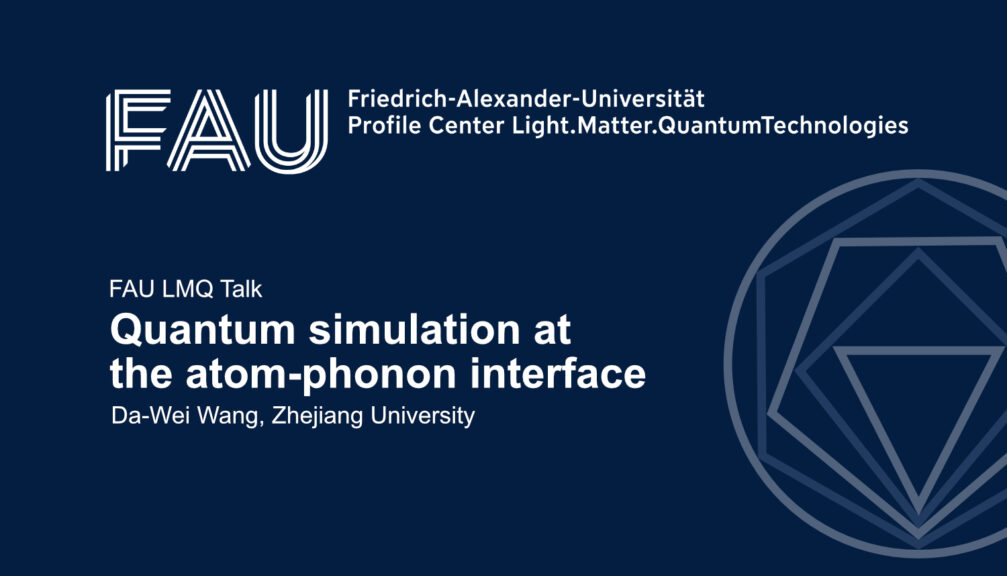We are happy to announce a talk this Wednesday, 29.05., 14:00-15:00 at the Physikum in HF, entitled “Quantum simulation at the atom-phonon interface”.
The talk will be hold by Prof. Dr. Da-Wei Wang from the School of Physics, Zhejiang University and is open to everyone. The talk is given in hybrid form, so you can both join live or virtual via zoom:
- Live at the Physikum in HF, Staudtstraße 5, Erlangen.
- Virtual, via Zoom: Meeting-ID: 643 9262 8072, Kenncode: 590693
Abstract
Quantum simulation is traditionally conducted in artificial quantum platforms such as ultra-cold atoms, trapped ions and superconducting circuits at extremely low temperatures. In these systems, the energy scale of the lattice parameters is so small that we need to cool down the system to preserve the coherence for enough time to observe the quantum phenomena. By using the strong coupling between atoms and light to build superradiance lattices, which are composed by timed Dicke states in momentum space, we can greatly increase the energy scale of lattice parameters such that quantum simulation can be conducted at room temperature. By exploiting the quantum degree of freedom of light, we can also build lattices in the Fock state space, providing a wealth of topological states that are fundamentally distinct from those in classical topological photonics. In this talk, we will introduce the basic theory of superradiance lattices and Fock-state lattices and their experimental realization. A short history of Chinese physics in the past 100 years is included.

We are happy to announce a talk this Wednesday, 29.05., 14:00-15:00 at the Physikum in HF, entitled “Quantum simulation at the atom-phonon interface”.
The talk will be hold by Prof. Dr. Da-Wei Wang from the School of Physics, Zhejiang University and is open to everyone. The talk is given in hybrid form, so you can both join live or virtual via zoom:
Abstract
Quantum simulation is traditionally conducted in artificial quantum platforms such as ultra-cold atoms, trapped ions and superconducting circuits at extremely low temperatures. In these systems, the energy scale of the lattice parameters is so small that we need to cool down the system to preserve the coherence for enough time to observe the quantum phenomena. By using the strong coupling between atoms and light to build superradiance lattices, which are composed by timed Dicke states in momentum space, we can greatly increase the energy scale of lattice parameters such that quantum simulation can be conducted at room temperature. By exploiting the quantum degree of freedom of light, we can also build lattices in the Fock state space, providing a wealth of topological states that are fundamentally distinct from those in classical topological photonics. In this talk, we will introduce the basic theory of superradiance lattices and Fock-state lattices and their experimental realization. A short history of Chinese physics in the past 100 years is included.